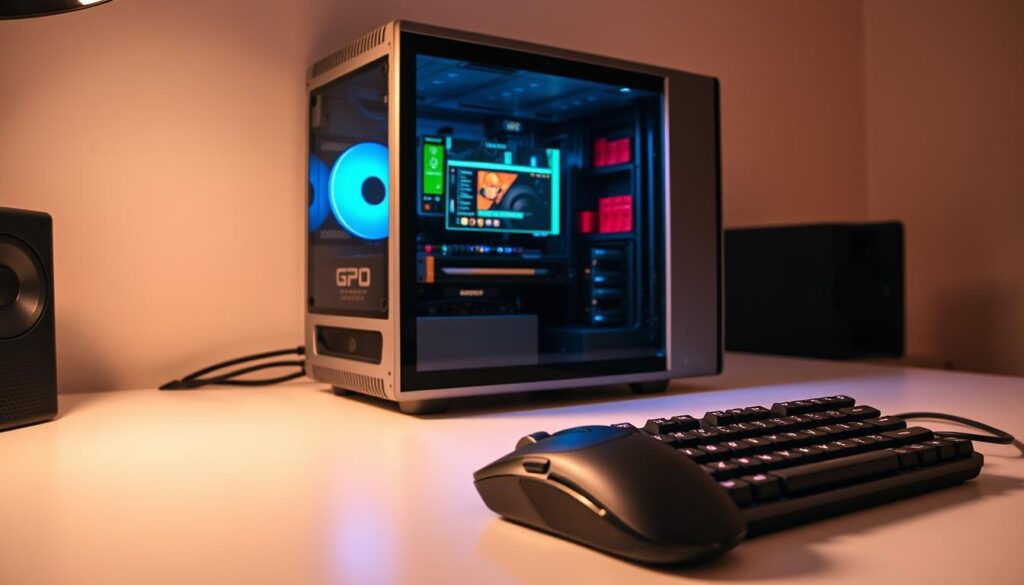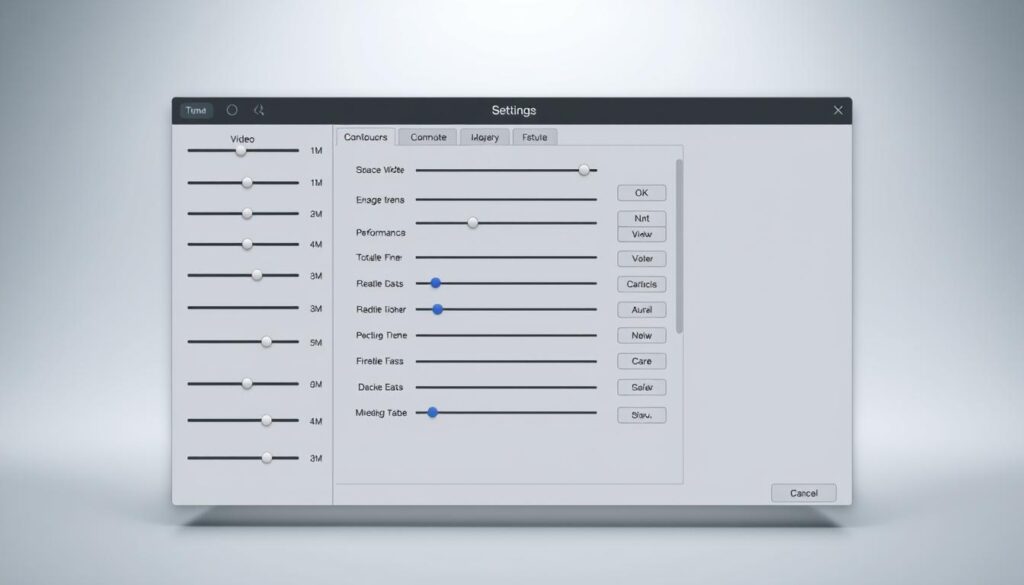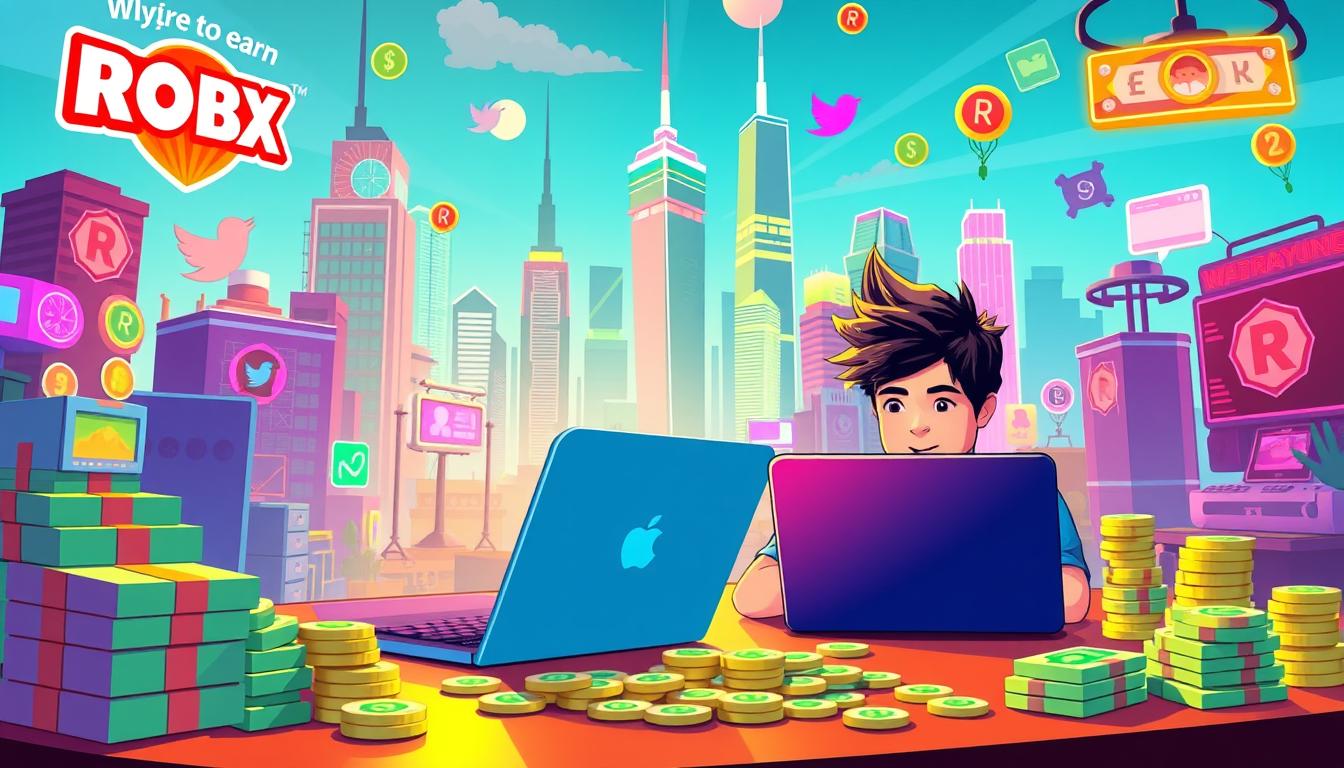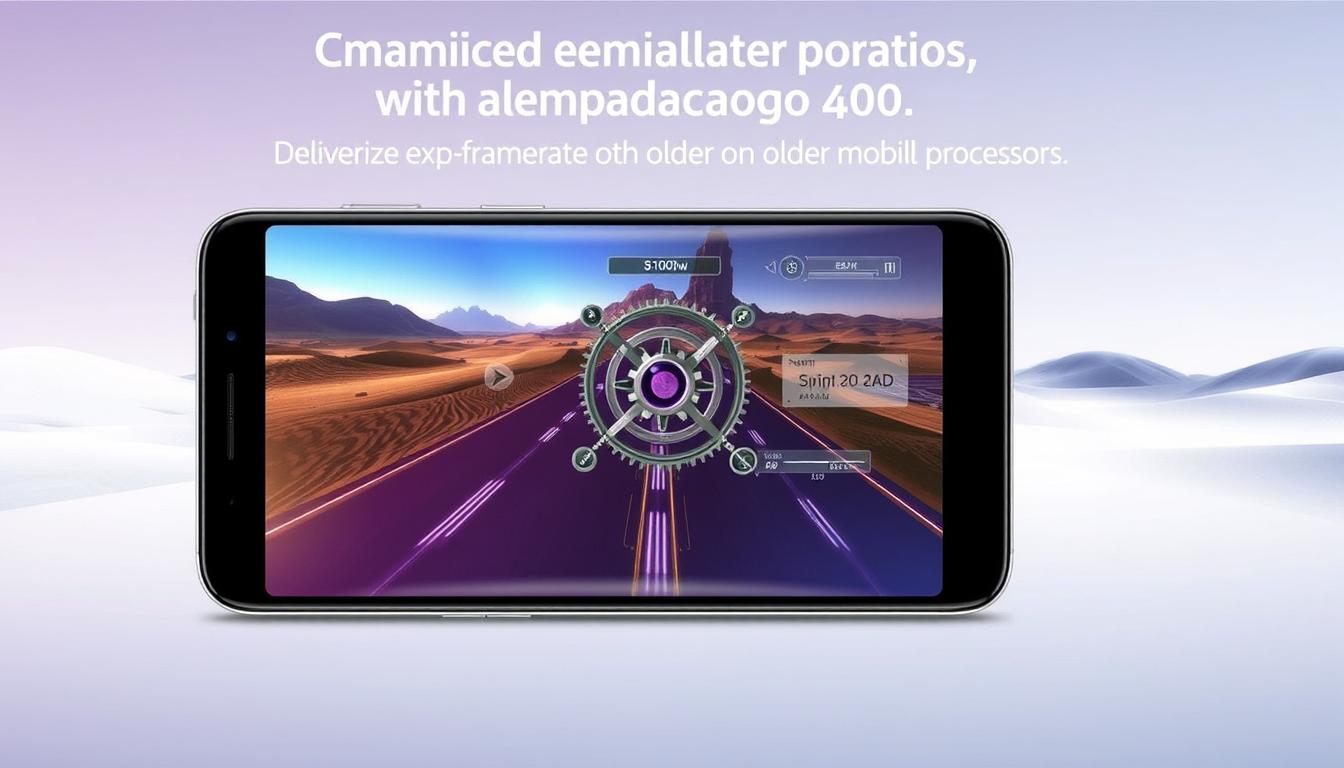Anúncios
Ever thought about playing Zelda on devices that seem too weak for games? Today, many gamers use emulators to play Zelda on their phones, even if they’re not the best for gaming. This article will show you how to get the best gaming experience with Zelda, even on low-end devices.
We’ll talk about how to improve emulator performance and find the top emulators. You’ll learn secrets to enjoy Zelda in new ways, no matter your device’s specs.
Introduction to Emulation for Zelda Games
Emulation has changed how we play classic games like Zelda. It lets us run games on different platforms. This way, everyone can enjoy the series’ great stories and gameplay, no matter their hardware.
Anúncios
The history of emulation goes back to the start of gaming. Fans wanted to play their favorite games on computers. This drive led to better technology, making emulators powerful for all devices. Now, players can get better graphics and smoother gameplay, making Zelda games even more fun.
One big emulator benefit is making games accessible to more people. Emulators help keep old games alive for new players. As gaming changes, emulation keeps improving. This lets fans enjoy their favorite games all over again.
Why Emulators Are Essential for Playing Zelda
Emulators are key for those who love classic games like Zelda. They make it easy for players to access games without the need for old consoles. This lets more people enjoy their favorite games without spending a lot on hardware.
Anúncios
Using emulators also means you can make your gaming experience your own. You can change controls and graphics to fit your style. This way, you get better visuals and smoother gameplay, things that older systems can’t offer.
Emulators also bring in cool features like save states and cheat codes. These add to the fun of playing games like Zelda. They make sure both new and experienced players can enjoy the game in a modern way.
The Best Emulators for Playing Zelda on Weak Devices
Playing Zelda on weaker devices requires the right emulator. The Yuzu emulator and Dolphin emulator are top choices. They boost gaming on weak devices, making Zelda games more enjoyable.
Yuzu Emulator Overview
The Yuzu emulator is great for running Nintendo Switch games, like Zelda. It offers a smooth gaming experience, even on less powerful devices. Users can adjust settings for better graphics and frame rates.
Its community support is a big plus. It helps users get the most out of their gaming experience.
Dolphin Emulator Overview
The Dolphin emulator is perfect for GameCube and Wii games, including Zelda. It has advanced graphics and performance tweaks for Android. This means even low-capacity devices can play these games well.
Dolphin lets gamers adjust settings for a better experience. Its easy-to-use interface makes it simple for everyone to enjoy.
Optimized Experience: How to Play Zelda Using Emulators for Better Gaming Performance for Zelda on Weak Phones
Playing Zelda on weak phones can be fun with the right tweaks. By adjusting emulator settings, you can get better performance. This means smoother gameplay, even on devices that aren’t the strongest.
To get the best gaming experience, choose the right emulator. Many offer settings that can be fine-tuned for better performance. For example, lowering the resolution can help devices that struggle with high graphics.
Also, turning off features like anti-aliasing can help. It reduces the load on your device without sacrificing too much quality. This way, you can still enjoy the game’s visuals.
When playing games on weak phones, it’s important to know your device’s limits. Look at each emulator’s performance profiles to find the best match. Adjusting settings can help reduce input lag, making the game feel more responsive.
Finally, make sure your operating system is set up for gaming. Closing apps in the background can free up resources. With the right emulator settings, you can have a great Zelda experience, even with limited hardware.
System Requirements for Emulating Zelda Games
To emulate Zelda games well, you need to know the system needs for different platforms. These needs change a lot between desktops and mobiles. This affects how well you can play the games.
Desktop vs. Mobile Device Requirements
Desktops need strong hardware to run emulators. A fast CPU and a good GPU are key. They help the emulator handle graphics and game logic well. Many gamers prefer desktops for a smoother Zelda experience.
Mobiles, on the other hand, focus on being efficient and having the right GPU for OpenGL or Vulkan. With the latest tech, many phones can now run demanding games. Look at guides for specific devices to see what works best for you.
| Criteria | Desktop Requirements | Mobile Device Specifications |
|---|---|---|
| Processor | Intel i5 or equivalent | Quad-core processor |
| Graphics Card | NVIDIA GTX 1060 or comparable | Adreno 630 or Mali-G76 |
| RAM | 8 GB or more | 4 GB minimum |
| Operating System | Windows 10, macOS, or Linux | Android 9.0 or higher, iOS 12.0 or higher |
| Storage | SSD recommended | 16 GB available space |
How to Optimize Your Operating System for Emulation
To get the best performance from emulated games, you need to optimize your OS for gaming. Making your operating system better can really help, especially on devices with less power. First, make sure your Windows is updated. Updates often bring performance boosts.
Disabling unused background apps is another key step. These apps use up system resources that your emulator needs. Use the Task Manager to find and turn off these apps. This makes your system more ready for gaming.
Changing your system settings can also help. Go to the Control Panel and set your Windows power plan to ‘High Performance.’ This makes your system more responsive and prevents slowdowns. Also, turn off visual effects that don’t affect your games.
If your device has less power, try increasing virtual memory. This lets your system use hard drive space as extra RAM. It helps keep things stable when you’re doing demanding tasks.

Graphics Optimization Techniques for Emulators
Improving graphics settings for emulators is key to better gaming on less powerful devices. Players should look into resolution scaling. This can greatly affect how games look. Lowering the resolution can make games run smoother, while scaling up can make them look clearer without slowing down the game.
Texture filtering is also important for better graphics. Adjusting these settings can make games look sharper and keep details clear. Trying different texture filtering options can enhance game visuals without dropping the frame rate.
Exploring different graphics options can also enhance your gaming experience. Turning off some visual effects or tweaking shadow quality can boost the game’s speed. Since each game and system is different, it’s smart to monitor performance while tweaking settings.
Configuring GPU Settings for Better Performance
Getting the most out of your gaming experience starts with the right GPU settings. Choosing between OpenGL and Vulkan is key. Each has its own benefits and downsides, affecting both speed and visual quality.
Choosing Between OpenGL and Vulkan
OpenGL is a trusted graphics API, loved for its wide support and easy-to-use guides. Vulkan, however, gives you direct access to hardware, leading to better performance. Your choice depends on your device’s GPU capabilities.
Here’s a quick look at what each offers:
| Feature | OpenGL | Vulkan |
|---|---|---|
| Performance | Moderate | High |
| Latency | Higher | Lower |
| Compatibility | Wide | Moderate (requires modern hardware) |
| Ease of Use | Higher | Lower (more complex setup) |
For the best gaming, try both APIs. Knowing their strengths and weaknesses helps you choose wisely for your setup.
Specific Settings for Yuzu Emulator
Using the Yuzu emulator for Zelda can be better with the right settings. Focus on graphics and VSync to get the best experience. These settings help make the game run smoother and look better.
Adjusting Graphics Preferences
Changing graphics settings can make a big difference. Go to the graphics section in Yuzu settings. Lowering the resolution and adjusting texture quality can help on slower devices.
Turning on asynchronous GPU emulation and using a shader cache also helps. This way, you get smoother gameplay without losing quality.
Disabling VSync for Improved FPS
Turning off VSync can boost FPS in the Yuzu emulator. VSync stops screen tearing but can slow down the game. Without it, you might see more frames per second, making the game feel smoother.
| Setting | Description | Effect on Performance |
|---|---|---|
| Resolution | Lowering the resolution can ease the load on the device. | Higher FPS |
| Texture Quality | Adjusting this setting improves overall visual performance. | Smoother graphics |
| Asynchronous GPU Emulation | Enhances speed without major visual loss. | Faster gameplay |
| VSync | Turning off can prevent frame capping. | Increased FPS |
Specific Settings for Dolphin Emulator
To get the most out of Dolphin emulator, tweaking specific settings can make a big difference. Adjusting resolution scaling, frame skipping, and audio latency boosts performance. This ensures smoother gameplay and better visuals.
Resolution Scaling and Frame Skipping
Resolution scaling is key for better graphics in Dolphin. Higher settings can make visuals clearer but require more from your hardware. Finding the right balance is important.
Frame skipping helps the emulator skip frames instead of lagging. This makes gameplay more responsive. The best settings depend on your system, so try different ones.
Audio Latency Considerations
Audio latency can ruin the gaming experience. Lowering audio latency settings makes sounds sync better with visuals. Adjusting these settings improves realism and smoothness in your game.
For action-packed Zelda games, fine-tuning audio is crucial. It helps create a more immersive experience.

Common Performance Issues and Solutions
Emulators can make gaming better, but they can also cause problems. Lag, stuttering, and crashes are common issues. Knowing how to fix these problems is key to enjoying games without interruptions.
Lag often happens when your computer can’t handle the game. To fix this, try lowering the game’s resolution or adjusting graphics settings. This can make games run smoother right away. Stuttering might be caused by too many settings for a weak computer. Make sure your emulator is set up right for your system to avoid this.
Crashes can stop you from making progress in games. Keeping your emulator and drivers updated can help. Updates often fix bugs and improve how well games run. Also, check if your emulator works well with the games you want to play.
Fixing lag is important for a good gaming experience. Try adjusting the emulator’s settings to match your computer’s specs. Finding the right balance between how well it runs and how it looks is key.
Keeping your computer clean by closing unused programs can also help. This lets the emulator use more resources, making games run better. A clean system means a better gaming experience.
Testing and Tweaking for Optimal Performance
Testing how well an emulator works is key to a better gaming experience. You need to check different settings for each game and see how your device handles them. Since each game has its own needs, finding the right settings is crucial.
Start tweaking emulator settings by trying out different options. Changing graphics or frame rates can make a big difference. Keeping track of these tests helps find the best mix of looks and smooth play.
Using strong testing strategies helps figure out the best settings. By noting each change and its effect, you build a useful guide. This method not only boosts performance but also makes playing Zelda games more fun.
Conclusion
Using emulators can make playing Zelda better, especially on devices that aren’t as powerful. We looked at different emulators and how to set them up for the best experience. Knowing how to fine-tune settings is key to better gaming.
Testing and tweaking settings is vital for great emulation. With the right settings, even basic hardware can handle Zelda’s amazing worlds. Emulators like Yuzu and Dolphin can make a big difference.
In the end, the right approach to emulators can improve your gaming. It helps you get past hardware limits and enjoy great adventures. By following the tips we shared, you can have an amazing gaming experience, no matter your device.
FAQ
What is emulation and how does it apply to playing Zelda?
Emulation is making a software copy of old gaming systems. This lets players run classic games like Zelda on new devices. So, you can play Zelda on many platforms, even those that can’t run the original games.
Why are emulators important for players who want to play Zelda?
Emulators are key because they let more people play classic games. They work on different devices and can make games look and feel better. This makes playing games more fun for everyone.
What are some system requirements for using emulators like Yuzu and Dolphin?
The needs for emulators vary. Desktops need strong CPUs and GPUs. Mobile devices need fast processing and support for graphics APIs like OpenGL or Vulkan.
How can I optimize my operating system for running emulators?
To get your OS ready for emulation, turn off apps you don’t need. Adjust your system for gaming. Also, keep your OS updated for better emulation.
What graphics optimization techniques should I use for a better gaming experience?
To improve graphics, adjust the game’s resolution and texture settings. Try different graphics options to find the right balance between quality and speed. This will make your game smoother.
How do I choose between OpenGL and Vulkan for my device?
Pick between OpenGL and Vulkan based on your device’s specs. Each API affects performance and visuals differently. Test both to see which works best for you.
What specific settings should I adjust in the Yuzu emulator for optimal performance?
In Yuzu, tweak graphics settings like resolution and texture filtering. Turning off VSync can also boost your game’s FPS. This makes your game run smoother.
What settings are recommended for optimizing the Dolphin emulator?
For Dolphin, adjust resolution scaling for clear visuals. Use frame skipping for better response. Also, tweak settings to reduce audio delay for a smoother game.
What are common performance issues when using emulators, and how can I solve them?
Issues like lag and crashes are common. Try adjusting emulator settings and check if your device meets the minimum requirements. Keeping your device cool also helps.
How can I systematically test and tweak emulator settings for the best performance?
Test by changing one setting at a time and see how it affects your game. This method helps find the best settings for your device’s capabilities.




